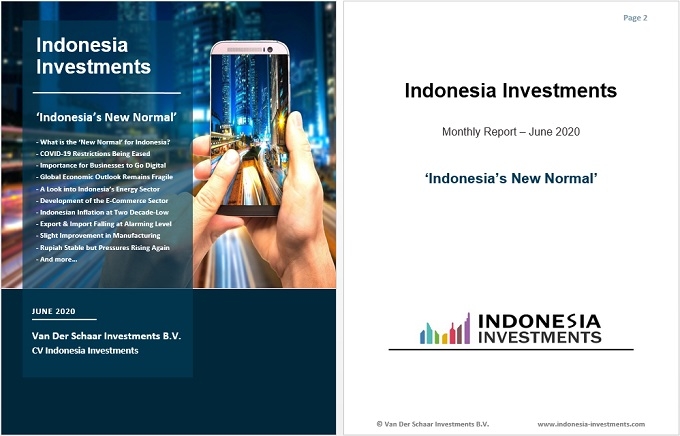Waspadalah terhadap penipu yang aktif di WA mengatasnamakan Indonesia Investments
15 April 2025 (closed)
Jakarta Composite Index (6,441.68) +73.17 +1.15%
Indonesia and the New Normal; What Are the Changes in Society and in Business Sectors?
Something interesting that we had pointed out in last month’s edition of our report is that the Indonesian government has started to loosen the self-imposed social and business restrictions despite the fact that new novel coronavirus (COVID-19) cases are still growing exponentially across the country (with Jakarta, West Java, East Java, Central Java, and South Sulawesi being the epicenters).
While countries in Europe are also easing their COVID-19 restrictions, the difference is that the number of COVID-19 infections and fatalities in various European nations have declined drastically compared to the peak in April 2020.
Indonesia, on the contrary, shows a very different trend; a rising trend. However, it is important to realize that COVID-19 data (and especially conclusions drawn from these data) may not accurately reflect the real situation. In the case of Indonesia, for instance, the number of tests that are conducted each day, is limited, but has been rising.
Suharso Monoarfa, National Development Planning Minister, said in late-June 2020 that daily COVID-19 tests have now reached about 11,000 across the country. But this could actually mean that growing numbers of newly confirmed COVID-19 cases around Indonesia are simply caused by the increasing number of tests being taken; and not necessarily because the virus is spreading around the country. Who knows, with 50,000 tests taken per day, in theory, Indonesia may actually be displaying the same trend as the European nations in the table above. But, we want to emphasize that this is purely speculation. What is true though is that the limited number of tests being conducted in Indonesia makes it impossible to draw accurate conclusions.
And the problem of having incomplete data is that it makes policymaking a complex matter. But what we have detected in terms of policymaking is that the central and regional governments of Indonesia shifted their focus in June 2020 from prioritizing people’s health at any economic costs (through harsh and drastic social and business restrictions) to encouraging the revival of limited economic activity (and thereby jeopardizing people’s health by, potentially, allowing room for the acceleration in new COVID-19 cases).
But, in our view, Indonesia has no other option than to allow the return of a degree of economic activity. If it doesn’t, then the economic and social price that has to be paid is just too much: millions of micro, small and medium businesses, who typically have limited liquidity, or cash reserves, simply collapse. And without sales, many of them are likely to fall into poverty. In that sense, the cure could be worse than the disease.
[...]
Read the full article in our June 2020 report. To purchase this report, please send an email to info@indonesia-investments.com or a WA text message to +62(0)8788.410.6944 for further information.
To view all our reports, click here
Price per edition:
• IDR 150,000
• USD $10
• EUR €10
• SGD S$15

Poll Indonesia Investments:
According to you at what pace will the Indonesian economy grow in 2020?
Voting possible: -
Results
- Lower than 0.0% (26.8%)
- Higher than 2.0% (17.9%)
- 0.5% - 1.0% (15.9%)
- 0.0% - 0.5% (15.8%)
- 1.0% - 1.5% (11.8%)
- 1.5% - 2.0% (11.8%)
Total amount of votes: 1025
Bahas
Silakan login atau berlangganan untuk mengomentari kolom ini
